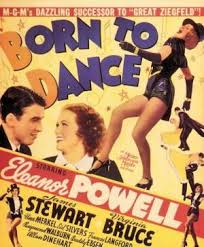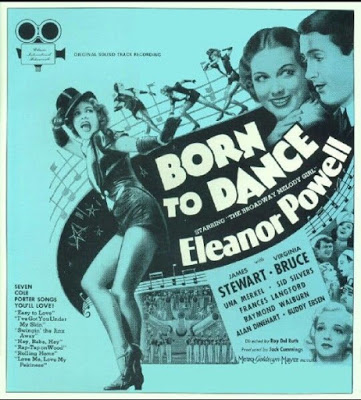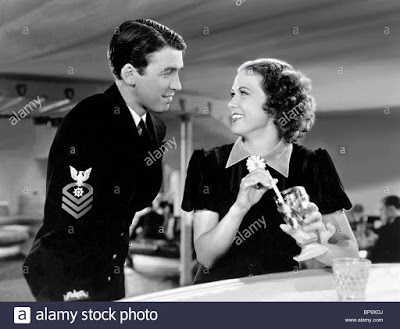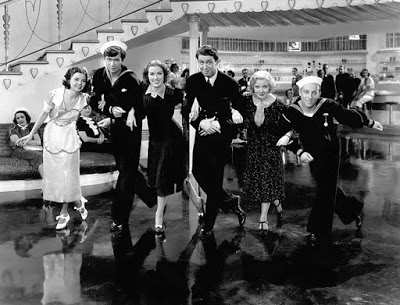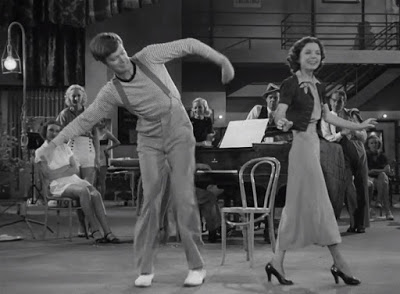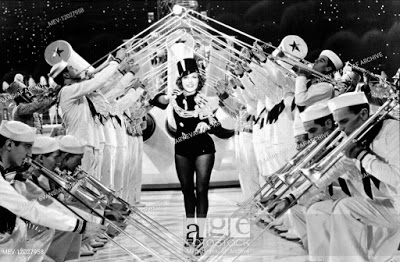Born to Dance
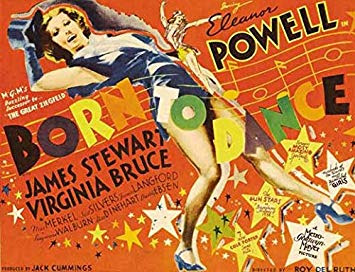
Director:
Roy Del Ruth
Year: 1936
Rating: 7.0
The title of the
film is clearly meant for Eleanor Powell. She really was born to dance. She
was brought up by a poor mother after her husband did a vanishing act when
Powell was two years old. Eleanor was told that her father had died so imagine
her surprise when he showed up about twenty years later. Her mother scrimped
enough to have Eleanor attend dancing classes when she was four. A good investment.
By the time she was twelve she was appearing in clubs and revues making $70
a week and supporting the family. Somewhere along the way, she took a few
lessons in tap dancing - not something she really found aesthetically pleasing
- but again it turned into a good investment. By the time she was twenty,
she was appearing in Broadway and gaining a reputation as a fine dancer.
She was invited to go out to Hollywood to do a specialty number in George
White's 1935 Scandals which she did but she didn't enjoy the experience and
wanted to get back to Broadway. MGM saw the clip from the film and thought
otherwise. She declined their offer and said thinking they would refuse that
she would do it for $1,200 a week. They accepted. Huge money back then. Especially
for someone who had just one film to their name.
